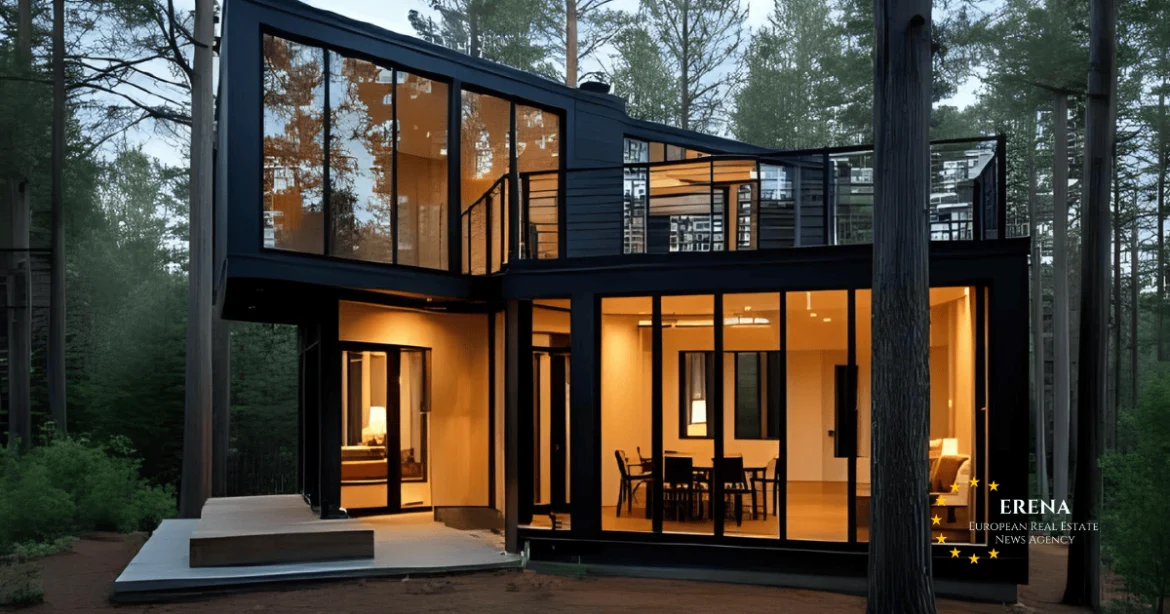In Pittsworth, a town west of Toowoomba, a striking new home is redefining what Australians expect from prefabricated housing. Built in Brisbane by Alphaline and transported in two massive modules, the 160 m² residence was craned into place on an 800 m² block. With VJ panelling, stone benchtops, and raked ceilings soaring to 3.6 metres, the project looks indistinguishable from a custom build — yet it is modular. This installation signals how far modular housing has advanced, moving firmly into the premium market.
From soil challenge to modular certainty
The Wright family initially faced serious engineering hurdles. Soil testing on their Darling Downs property revealed instability, making a traditional concrete slab costly and risky. Engineers estimated an additional €22,500 (≈ AUD 40,000), plus a 15 % variation clause that could have added tens of thousands more. By turning to modular construction, they avoided these risks. A mega-anchor foundation system provided stability for the difficult ground while allowing the home to be delivered on time and on budget.
“…it was phenomenal to be there, to watch the lift…”
— Ms. Wright
Mr. Wright noted that steering clear of an expensive slab was a major financial relief and reinforced why modular was the better choice.
A premium price in Pittsworth
While most Pittsworth properties change hands for considerably less, this new residence is expected to enter the market at a premium. According to NGU Real Estate’s Matt Hawkins, the home is anticipated to list in the high €448,000s (≈ AUD 800,000s), setting a new benchmark for the regional market.
“It is really high-end — it has raked ceilings, premium appliances, and a lot of natural light. With the landscaping, it is clear no expense has been spared.”
— Matt Hawkins, NGU Real Estate
This price positioning underscores a broader shift: modular homes can now command values on par with luxury custom builds.
Queensland’s modular rollout
The Pittsworth installation reflects a statewide trend. The Queensland government is scaling up modular housing through its Modern Methods of Construction (MMC) program, overseen by QBuild. To meet demand, new Rapid Accommodation & Apprenticeship Centres (RAACs) have opened at Eagle Farm, Zillmere, and Cairns, where homes are produced while apprentices learn modern building techniques.
By September 2024, more than 215 modular homes had been completed or placed under contract. By April 2025, RAAC facilities alone had delivered 44 homes — 18 from Cairns and 26 from Eagle Farm, according to parliamentary records. The government’s broader goal remains ambitious: up to 600 modular homes by the end of 2025, with contributions not only from QBuild but also private sector partners including Hutchies Modular, WestBuilt, Modscape, and Ausco.
Why modular is gaining ground
Rising material costs, labour shortages, and prolonged construction timelines have made conventional building increasingly unpredictable. Modular manufacturing offers greater certainty by standardising production, reducing weather-related delays, and minimising waste. At the same time, design standards have evolved: high ceilings, light-filled interiors, and premium finishes are now standard inclusions.
For regional buyers, the appeal is clear — a home that rivals traditional builds in quality but arrives faster and with fewer risks. For developers, modular construction ensures predictable delivery in a volatile housing market.
From niche to mainstream
Once associated with mining camps and relocatable cabins, modular housing in Australia is now entering the mainstream. The Pittsworth home, valued at more than €448,000 (≈ AUD 800,000), demonstrates that prefabricated methods can deliver both style and substance.
For homeowners, it offers security and luxury. For government, it provides a way to rapidly expand housing supply without compromising standards. And for the construction industry, it represents a clear path forward — where speed, sustainability, and design converge to meet the needs of modern living.

